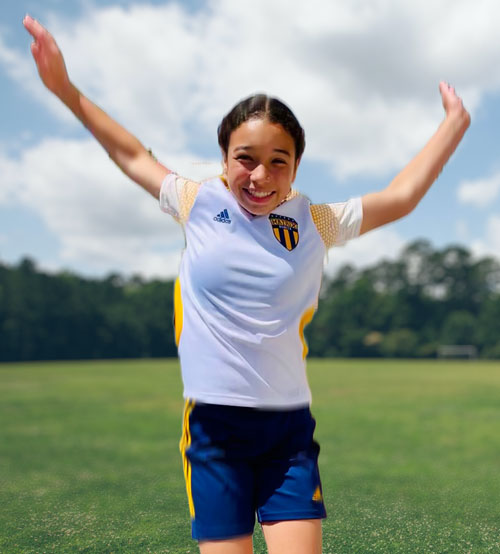Protect Your Athletes from Sudden Cardiac Arrest
Cardiac Emergency Response Planning for Youth Sports Teams
The Eric Paredes Save A Life Foundation supports California state law for community youth sports teams to have a cardiac emergency response plan with access to an automated external defibrillator (AED) to protect young hearts. We encourage youth sports communities to create a culture of prevention by using our free Keep Their Heart In the Game toolkit to comply with the Nevaeh Youth Sports Safety Act:
- By January 1, 2028, athletes have access to an AED during any practice or match
- By January 1, 2027, coaches are CPR/AED certified
- By January 1, 2027, teams have a written cardiac emergency response plan that includes:
– the location of any AEDs and procedures to be followed in the event of a sudden cardiac arrest
– the responsibilities of coach, administration and athletes during the event
– how coach, administration and athletes will be notified and trained on the emergency response plan
– an electronic communication to parents or guardians of enrolled players to share location of AED/s and response plan
Up to 23,000 youth are lost each year to Sudden Cardiac Arrest (SCA), the leading cause of death on a school campus and the #1 killer of student athletes. Once SCA strikes, the survival rate is less than 10%. A coordinated and well-practiced response to a cardiac emergency by people who witness the SCA can increase survival up to 70%. Automated External Defibrillators (AEDs) are a critical component of this emergency response. A study published in Sports Health showed if an on-site AED was used in the resuscitation, 89% of athletes survived.
Cardiac Emergency Response Plan Toolkit
Frequently Asked Questions

Isabelle Owens • August 17, 2009 – May 20, 2023
This program is dedicated to all youth lost to sudden cardiac arrest, including Isabelle Owens, a 13-year-old athlete who though effortlessly played soccer her entire life, collapsed during a game on a remote North County San Diego field in May 2023. An AED was not present, the park facility with an AED was locked, and a connection to 911 was difficult due to a weak signal. Though bystanders performed CPR for 25 minutes while awaiting an ambulance, Isabelle was lost.
Testimonials
“After working with Keep Their Heart in the Game, I can’t imagine running our summer tournaments without a cardiac emergency response plan in place. The peace of mind knowing that we are prepared to respond in an emergency has been well worth the work on the back end incorporating this into our standard tournament preparation process.”
—Craig Bedford, Tournament Director, City SC
California’s Nevaeh Youth Sports Safety Act states by 2028 an AED must be accessible to young athletes during both practice and games with a cardiac emergency response plan and coach CPR/AED training in place by 2027.

